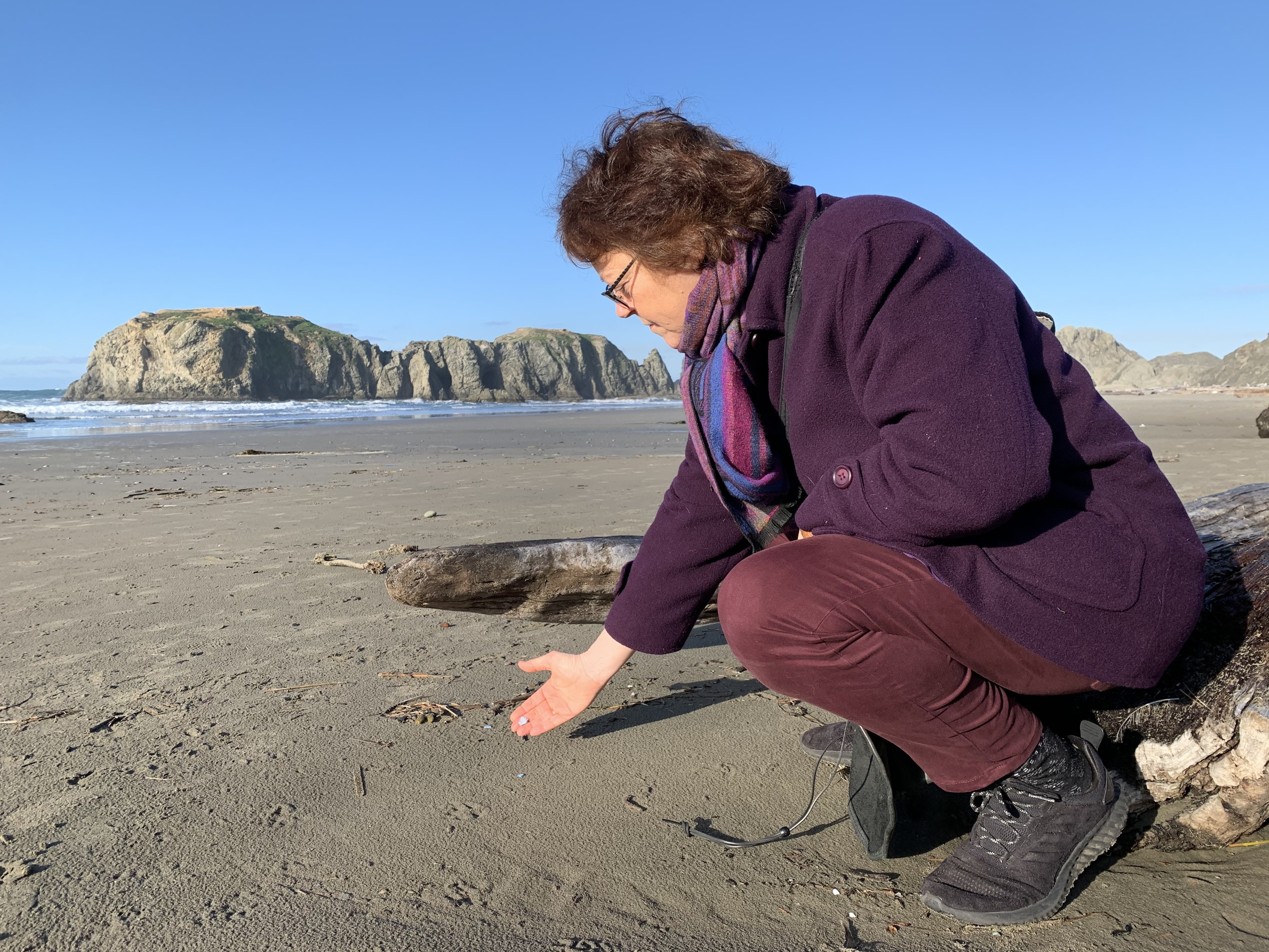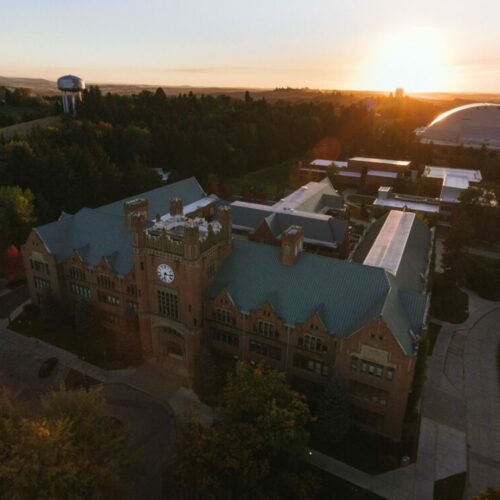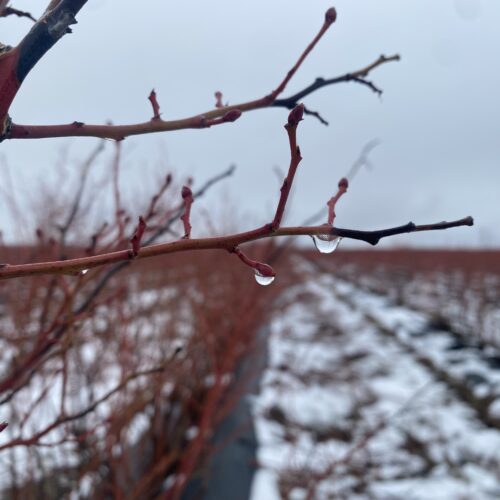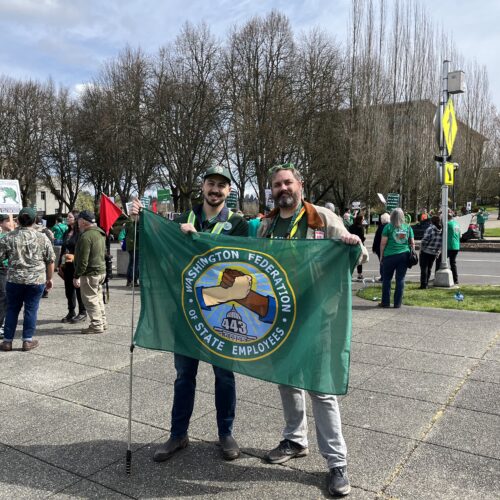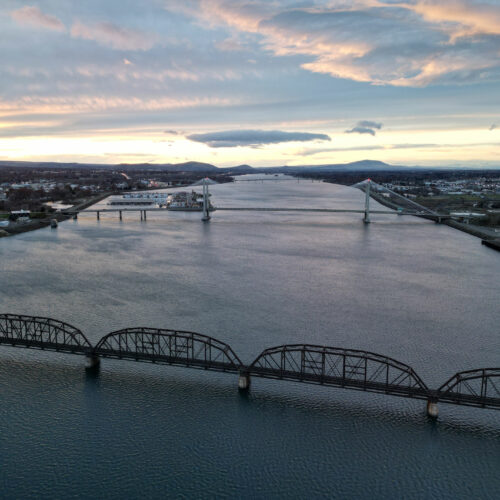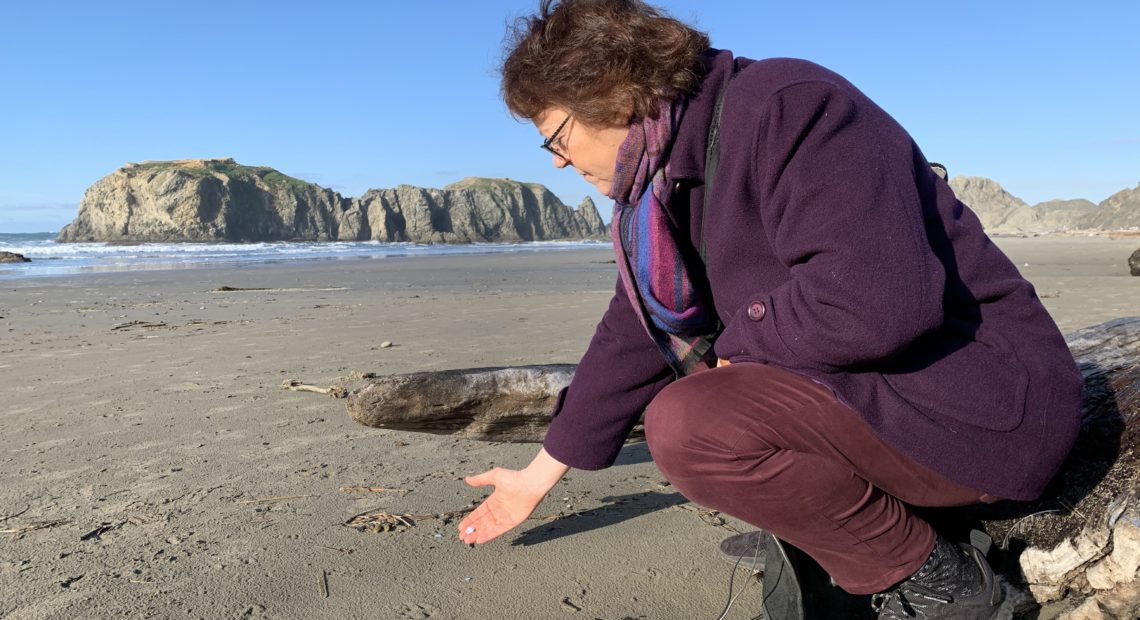
Turning Pollution Into Art With A Purpose On The Oregon Coast
Listen
BY KIRK SIEGLER
At Coquille Point along the remote and rugged southern Oregon Coast, the wind is tumultuous and the sea just as violent. Huge waves crash up against the giant, moss-cloaked rocks perched off the beach.
This particular stretch of the Oregon coastline is famous for being pristine and wild. But train your eyes down a little closer to the beach and sand as Angela Haseltine Pozzi so often does, and even here you’ll find bits of plastic.
“I think the most disturbing thing I find is detergent bottles and bleach bottles with giant bite marks out of them by fish,” she says.
Haseltine Pozzi is a local artist and longtime art teacher who’s made it her mission to collect as much of this shameful garbage as possible. It washes up from Asia, Europe, California and right here in Oregon.
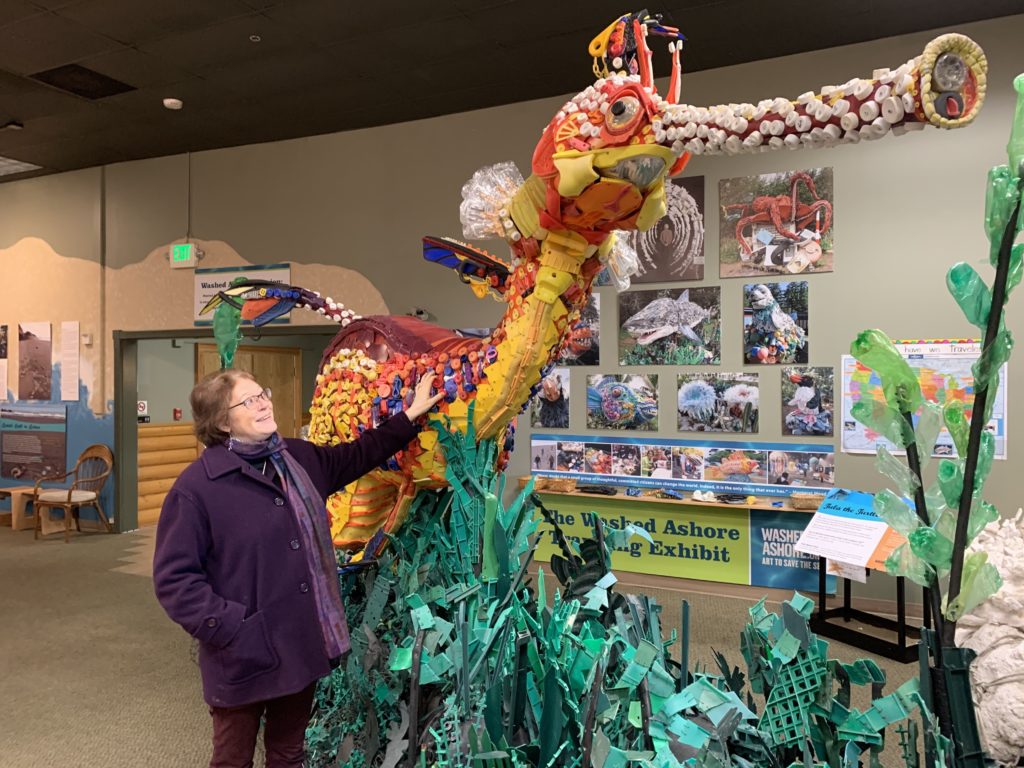
In her gallery in Bandon, Ore., Angela Haseltine Pozzi stands next to an enormous sea dragon sculpted from plastics found on Oregon’s beaches that are normally famous for being pristine and wild. CREDIT: Kirk Siegler/NPR
In her gallery in the nearby town of Bandon, where she’d spend summers with her grandmother exploring the wild beaches, she’s now taking these plastic invaders and turning them into jaw-dropping sculptures. The plastic bottle caps, cocktail toothpicks, shotgun shell casings — anything — form life-size garbage creatures of the very marine life threatened by all this plastic.
“The idea is you can’t ignore something that’s really big,” Haseltine Pozzi says. “It grabs your attention.”
Some are almost comical, if in a dark way. It’s indeed hard to ignore the giant weedy sea dragon, its neck made of suction cups from old vacuum cleaners, its eyes of black plastic water bottle caps. Nearby, there is a jellyfish sculpted from golf balls. There are sharks and birds with feathers made from flip-flops and plastic lighters fastened together.
And you can’t miss the life-size replica of a juvenile humpback whale’s rib cage made of, you guessed it by now, plastic household bleach bottles. You can walk under it or even bang on it like a drum if you’re frustrated by this point.
Haseltine Pozzi’s goal in creating this project is to reach the general public, not just converted art connoisseurs and environmentalists.
“I want to reach everybody. I want to reach kids,” she says. “I want to reach people who might throw something on the beach and not think about it, and I want them to start to think about it.”
In 2010, she founded the nonprofit Washed Ashore to support all this work, including the popular gallery and extensive education and outreach nationwide. They’ve built 80 sculptures made out of 26 tons of garbage collected from the Oregon Coast. They’ve been displayed across the country — from the zoo in Tacoma, Wash., to the Smithsonian in Washington, D.C. There are classes for students young and old, beach cleanups and plenty of hands-on opportunities to help build these sculptures in the Bandon gallery.
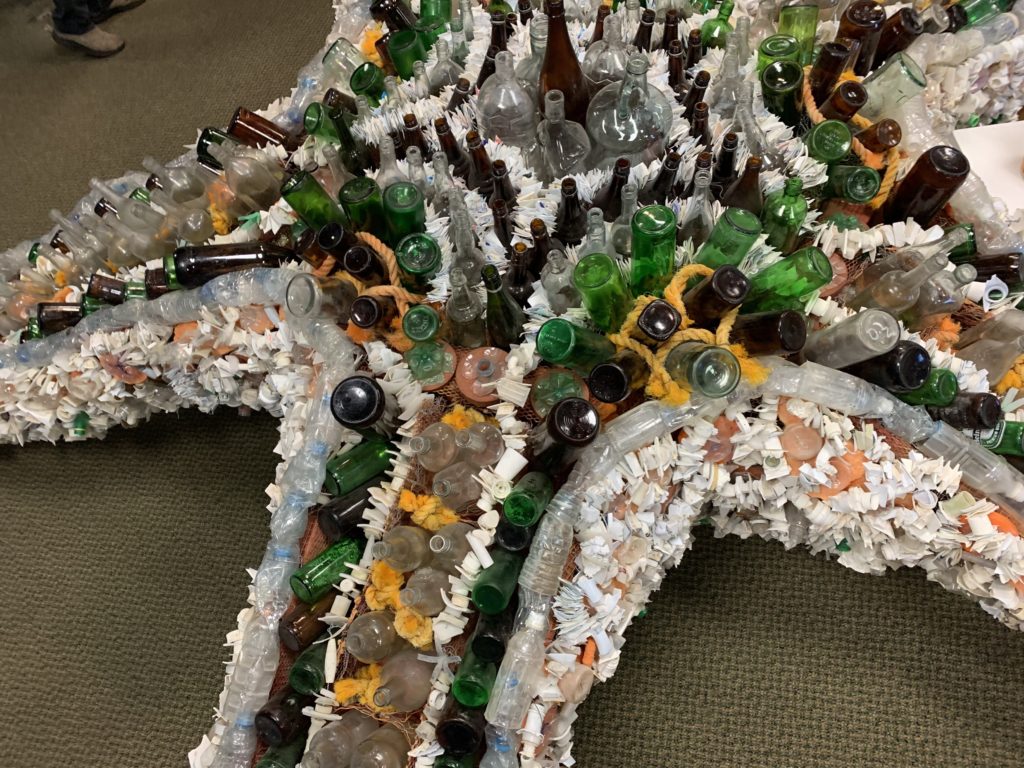
A sea star made mostly of plastic water bottles from the 2008 Summer Olympics in China that are still washing up on Oregon beaches today.
CREDIT: Kirk Siegler/NPR
One of the most popular there is a 6-foot-wide sea star made from plastic water bottles, most from the 2008 Olympics in China.
“They’re still coming in,” Haseltine Pozzi says. “Still washing up on our beaches [with] the insignia on them.”
As dismaying as all of this is, Haseltine Pozzi is a pragmatist. She’s not on a crusade to end all plastics. She knows we have to use them in critical things like our phones or our medical equipment.
But will these enormous plastic sculptures make us rethink how much we use?
“Single-use plastics are the most dangerous because you use it and in five minutes you’re done with it and then it lasts a thousand years,” she says. “We were never taught that. If we [had] we’d think differently.”
Education, Haseltine Pozzi says, can make a difference. After all, we invented all these convenient plastics, so why can’t we create our way out of this crisis?
Related Stories:
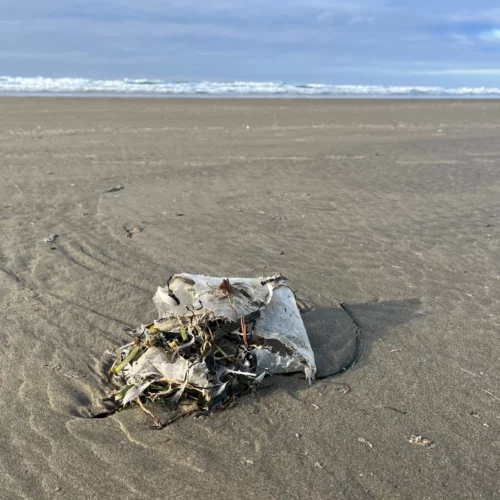
Foam dock floats, laundry filters, hotel shampoo amongst newest bids to reduce plastic pollution
Everywhere they look, Pacific Northwest scientists find teeny-tiny plastic pollution. Broken down particles are in our water, falling out of the air, in salmon, shellfish and in our own bodies. Scientists, environmental advocates and Democratic lawmakers in Olympia and Salem have seen enough to make them seek more regulations.
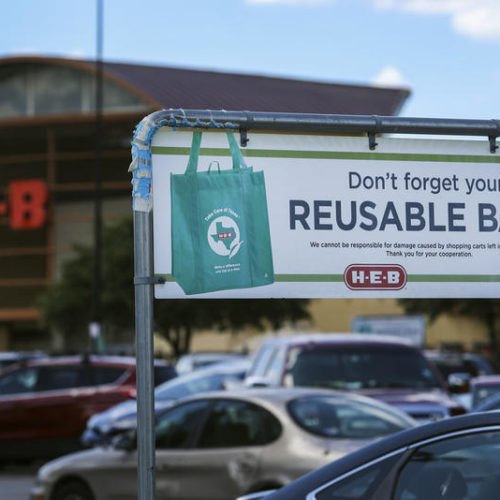
COVID-19 Has Resurrected Single-Use Plastics. Are They Back To Stay?
COVID-19 is changing how the U.S. disposes of waste. It is also threatening hard-fought victories that restricted or eliminated single-use disposable items, especially plastic, in cities and towns across the nation.
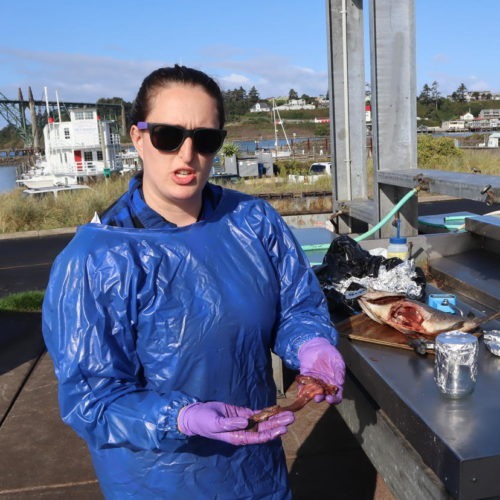
Don’t Want Plastic With Your Seafood? Neither Do Otters And Orcas In Northwest Waters
Plastics in the ocean food chain has become a hot topic for local scientists, for similar reasons city and state policy makers and activists are debating plastic bag bans and how to reduce plastic straw and bottled water usage. All are concerned that the world’s oceans are awash in plastic trash and fibers.

